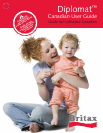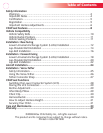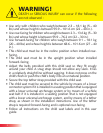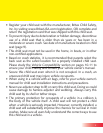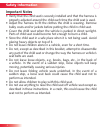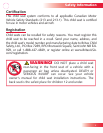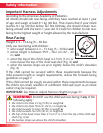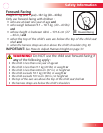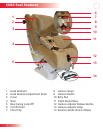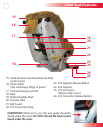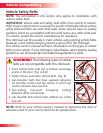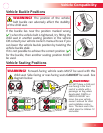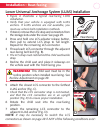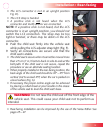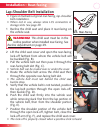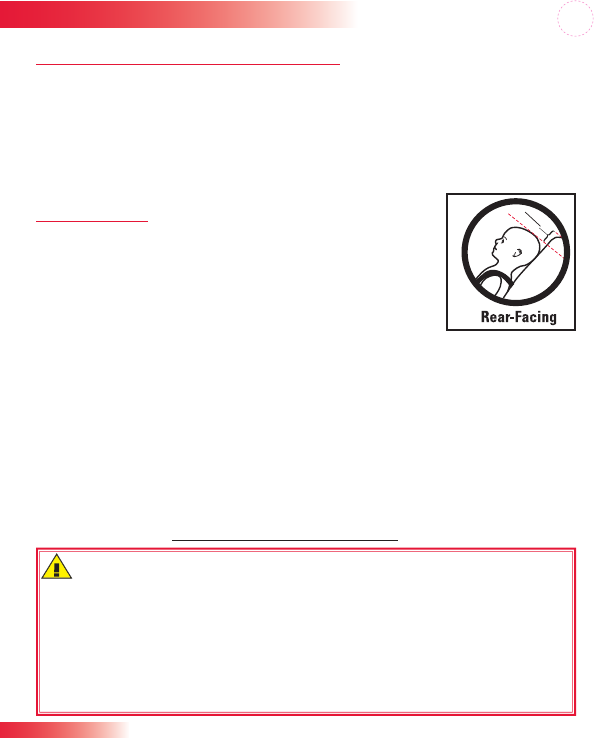
6
Important Harness Adjustments
According to the American Academy of Pediatrics :
All infants should ride rear-facing until they have reached at least 1 year
of age and weigh at least 9.1 kg (20 lbs). That means that if your infant
reaches 9.1 kg (20 lbs) before her first birthday, she should remain rear-
facing at least until she turns 1 year old. It is best for children to ride rear-
facing to the highest weight or height allowed by the manufacturer.
Rear-Facing
Weight 2.3 – 13.6 kg (5 – 30 lbs).
Only use rear-facing with children :
who weigh between 2.3 – 13.6 kg (5 – 30 lbs) • and
whose height is between 55.9 – 76.2 cm (22 – 30 •
in.) and
when the top of the child’s head is 2.5 cm (1 in.) or •
more below the top of the child seat shell (Fig. A) and
when the harness straps are at or slightly below the child’s shoulders •
(Fig. A)
If the child cannot be secured within these requirements because the
child exceeds height or weight requirements, review the forward-facing
guidelines on page 7.
If the child cannot be snugly secured within these requirements because
the child is too small, selection of a different child seat (such as an infant
carrier) may be required.
IMPORTANT: See How to Adjust Harness Height on page 31.
Safety Information
1 inch
2.5 cm
A
WARNING! Do NOT use the child seat rear-facing if any of the
following apply :
the child is less than 2.3 kg (5 lbs) in weight • or
the child is less than 55.9 cm (22 in.) in height • or
the child exceeds 13.6 kg (30 lbs) in weight • or
the child exceeds 76.2 cm (30 in.) in height • or
the top of the head is less than 2.5 cm (1 in.) from the top of the child seat •
shell (Fig. A) or
the harness straps are above the child’s shoulders•



